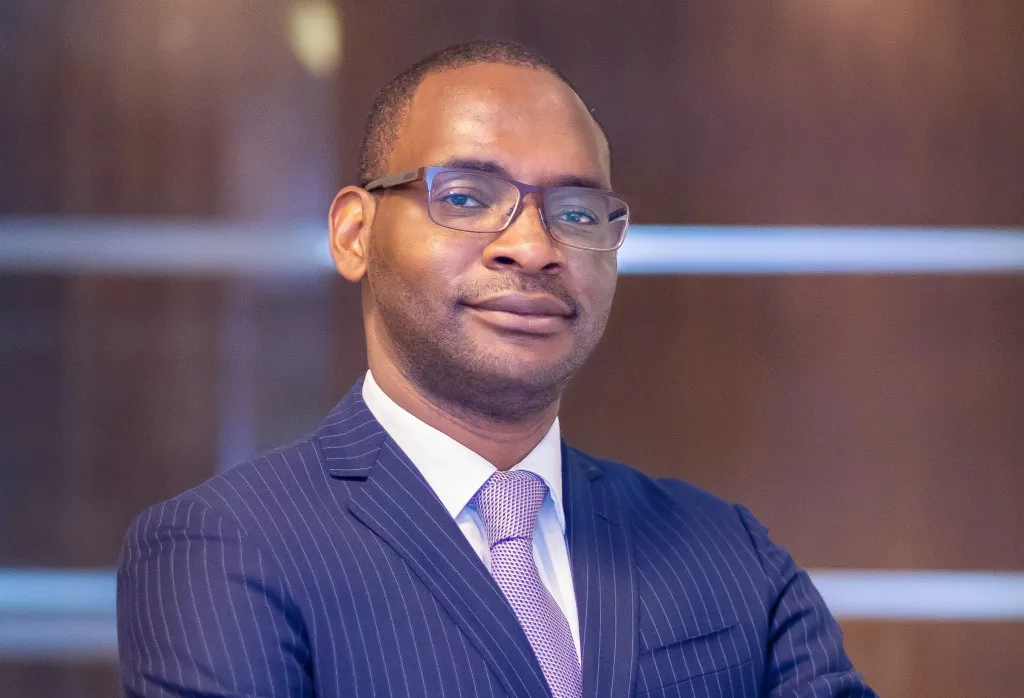This article was produced with the support of GCC
The trend of working from home, and the products and technology supporting that, as well as the ability of SMEs to adapt to new opportunities will stand this segment in good stead going forward, predicts Jules Ngankam, CEO of the African Guarantee Fund (AGF) Group.
But the lingering economic hardships of long lockdowns and business and trade restrictions have hit SMEs hard. This is reflected partly in the drop from $50m to $5m in AGF’s total monthly disbursements to commercial banks since April 2020 as part of their risk-sharing mechanism for new loans to SMEs.
“We share the risk of loan defaults when commercial banks in Africa lend to SMEs,” explains Ngankam. “If a bank lends to an SME and they cannot pay them back, we will pay a portion of the loan. This is to encourage banks to increase their lending to these companies and support them in case of non-payment.”

Supporting SMEs
AGF was established in 2011 by the Government of Denmark (represented by DANIDA), the Government of Spain (represented by AECID) and the African Development Bank (AFDB), with a mandate of facilitating access to finance for SMEs to enable them to fully play their role of driving the growth of African economies.
In 2015, the French Development Agency (AFD) became AGF’s fourth shareholder and thereafter the Nordic Development Fund (NDF), KfW Development Bank and, most recently, the Investment Fund for Developing Countries (IFU) have joined.
The Covid-19 pandemic has thrown up both winners and losers, says Ngankam. The sectors worst hit by lockdowns include logistics, transport and entertainment. The winners were healthcare, food production and online leisure and content providers. In between were sectors such as real estate, construction, manufacturing and others that rely on workers to be on site.
Growth is expected in businesses driven by technology. “The appetite for technology in Africa will drive leapfrogging. It is a game changer,” says Ngankam. “It allows SMEs to be able to go outside their comfort zone and reinvent themselves.”
SMEs need to look at different business models, he says, geared to new realities emerging in the market as a result of the pandemic. He cites a shift from restaurant businesses to delivering food to workers at home, from foreign cinematic content to African content providers and a shift from interpersonal learning to online training and new platforms for a host of activities.
Banks are also changing the way they do things. They are able to do their due diligence on possible customers online, for example. But commercial banks still regard SMEs as high-risk customers for loans. AGF has helped to leverage more lending into the SME segment of the market by providing risk sharing for loans. It has introduced a Covid-19 Guarantee Facility that has suspended or adapted some of the organisation’s regular conditions to support banks facing high levels of non-performing loans as a result of the pandemic.
Ngankam says that the AGF facilities focused initially only on new loans to avoid banks saddling the organisation with their non-performing loans. Because of current liquidity issues, the risk cover has been extended to both new and existing loans but only on condition the banks agree to restructure non-performing loans.
The risk cover is also typically paid to the banks in tranches to ensure the latter are not leaning on AGF for relief without doing all they can to get loans repaid. But under the Covid-19 facility, some accommodation was made on this requirement to support banks’ liquidity.
“Our mandate is job creation so we do whatever we can to enable SMEs to create more jobs. But for now, the mandate is not job creation, but job preservation.”
AGF has been able to address its own liquidity needs by working with those partners willing to help SMEs to navigate the effect of the pandemic, including donors, development finance institutions, governments and impact investors.
The organisation typically deals with Tier 2 and Tier 3 banks as well as microfinance institutions (MFIs). “For Tier 1 banks, SMEs are just one income stream but for the others, particularly Tier 3 banks and MFIs, it is their main business. There is more risk for them but there is a greater development impact,” he says.
In terms of AGF’s financing spread, 40% is directed at commercial banks, 40% to Tier 2 banks and 20% to Tier 3 banks and MFIs, where the loan amounts are much smaller.
Filling the skills gap
AGF does not limit its interventions just to financing. “The financing gap is a consequence of the skills gap. The right people need to be in place to manage that money. SMEs don’t have a lot of resources and they can’t compete in the talent market.”
Through its capacity development, AGF helps SMEs learn how to present their finances to the banks and how to organise their information, among other things.
“We differ from many development finance institutions in that we deal with very small players. This is where you can really make the difference and even see these small players become big. When we lose customers, we believe we have succeeded as they no longer need our support.”
How does AGF define an SME? Ngankam says this is a problem because Africa does not lend itself to a one-size-fits-all categorisation. “The reality is not the same across the continent. Take a country like Nigeria, an SME there would be considered to be a big company in Malawi because of the size of the economy.” The organisation has settled on using the banking sector’s own definition of SMEs in each country to enable it to monitor the banks’ various portfolios.
Ngankam says AGF is prioritising developing women-owned enterprises going forward, working in partnership with the AfDB on the Affirmative Finance Action for Women in Africa (AFAWA) initiative, which aims to unlock up to $3bn in loans to women-owned SMEs through its Guarantee for Growth programme.
The overall AFAWA programme also seeks to address policy issues that affect women’s ability to raise loans and build businesses, for example. Women in some countries cannot own land so have no collateral for loans and in some cases, they need their husband’s permission to get a loan.
“With SMEs generally there is a big perception gap. That is one of our biggest challenges. It is the difference between the perceived risk and the real risk, and this affects women entrepreneurs as well.”
He says banks tend to regard lending money to women as a favour. “It’s not a favour. It’s a business opportunity,” he says. Research has shown that women have a much better track record than men for managing their businesses and paying back loans.
The other current priority is clean energy and climate-change friendly businesses. These include waste management and SMEs involved in alternative energy generation and energy saving initiatives. “There are now a lot of SMEs in the energy sector because governments have not produced enough energy.”
Many success stories in Africa are because of government failure he says, citing mobile payments and mobile phone companies. “Because governments failed, opportunities were created.” The same will happen with energy, with a profusion of solar initiatives, mini-grids and other technology starting to be rolled out by and for SMEs, he predicts.
He says the need for SME financing in Africa is estimated at about $300bn and AGF currently supplies only $3bn of this need. “It may only be 1% of what is needed but we can see the impact and that is very important.”
 Sign in with Google
Sign in with Google 



